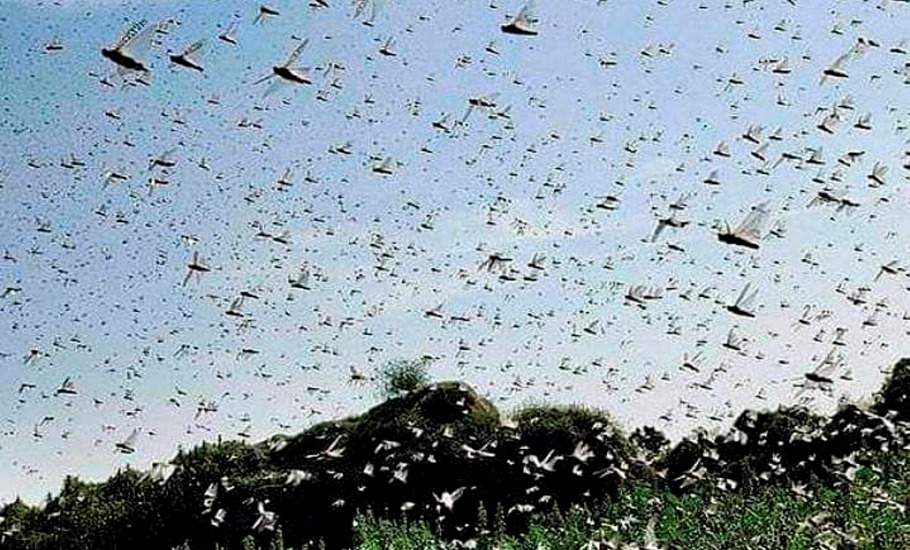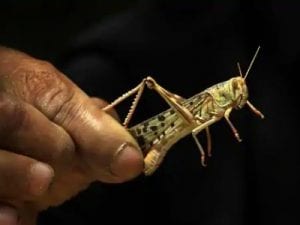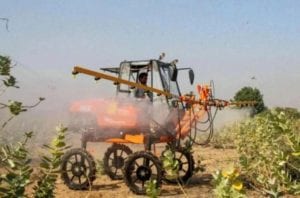
Locust attacks went out of control as COVID-19 diverted Iran's attention
With swarms of locusts entering India and wreaking havoc in several states, experts believe that while these crop-eating pests are a constant threat from Pakistan and Iran, the situation this year went out of control due to Iran's diverted attention in dealing with the COVID-19 pandemic.

With swarms of locusts entering India and wreaking havoc in several states, experts believe that while these crop-eating pests are a constant threat from Pakistan and Iran, the situation this year went out of control due to Iran’s diverted attention in dealing with the COVID-19 pandemic.
The locust attacks in Madhya Pradesh came after a period of about 27 years. The insects first entered the state on May 17 through its Neemuch district, bordering Rajasthan. Since then, various swarms of locusts have travelled across about 34 of its total 52 districts. The last visit made by these pests was in 1993, said retired agriculture director DS Kaushal.
“Locusts keep coming every year, but we manage to contain them at initial stages with sustained efforts by the FAO (Food and Agriculture Organisation) Commission for Controlling the Desert Locust in South-West Asia, an international body that tracks and controls locusts,” said Dr KL Gurjar of the Locust Warning Organisation (LWO), Faridabad.

However, this year, despite regular meetings in March, proper coordination was missing at the international level, especially from Iran. It seems that Iran had shifted its priority towards battling the COVID-19 pandemic, added Gurjar. Iran has so far reported over 1.43 lakh cases of COVID-19, including more than 7,000 deaths.
Monitoring and controlling locusts
The LWO, the oldest national locust monitoring system established during the colonial era, works under the Union Ministry of Agriculture, and conducts locust surveys and control operations across India. It has two headquarters – in Faridabad (administrative) and Jodhpur (technical operations). Dedicated LWO teams survey desert locust habitats throughout the year from its offices in Bikaner, Barmer, Jodhpur and Jaisalmer.
The Food and Agriculture Organisation of the United Nations is the international coordinating agency that holds meetings of the locust-affected countries — Pakistan, Afghanistan, Iran and India — in Southwest Asia. These nations hold meetings every week since March to keep the locust situation under control.
Related news: Rabi crops in India not affected by locusts; efforts on to save kharif crops
Much of these locust movements are associated with the strong westerly winds from Cyclone Amphan in the Bay of Bengal.
“Several successive waves of invasions can be expected until July in Rajasthan with eastward surges across northern India, as far as Bihar and Odisha, followed by westward movements and a return to Rajasthan on the changing winds associated with the monsoon,” said KL Gurjar. These movements will cease as the locust swarms begin breeding and become less mobile.

The locust swarms entered Madhya Pradesh through Neemuch and has been travelling to Mandsaur, Ratlam, Jaora, Agar Malwa, Shajapur, Ujjain, Dewas, Harda, Dhar, Raisen, Satna, Hoshangabad, Singrauli, Morena, Sheopur, and other districts, depending on the direction of wind.
Avnish Chaturvedi, deputy director, agriculture and in-charge of the team leading the locust operation, said that their teams keep updating the districts that might face an invasion of these pests. A team of officials keep moving with the locusts. “They travel about 50-100 kms a day and rest at night. We conduct our operations at night when they rest on trees. Fire tenders are used to spray a mix of chemicals that kills them,” said Chaturvedi.
The LWO has started using drones from Wednesday (May 27) for spraying chemicals. One more drone would be added to the fleet this week, added Chaturvedi.
Related news: 10 Uttar Pradesh districts on alert after locust attacks in Rajasthan, MP
The locusts move towards the direction of wind, and thus their movement can only be anticipated by the wind direction. Their flocks break or join with time, and that keeps changing the strength of their swarms. The swarms in Madhya Pradesh are of smaller size, i.e. 8-10 km. Generally, the size of their swarms ranges from 50 to 100 km.
“We are banging utensils, playing loud music and beating drums to scare these insects. Farmers in our region were lucky as we had already harvested the crops and our fields are now empty,” said Lalla Patidar, a farmer from Mandsaur district.

Ajay Dhakad, another farmer, cited an interesting way of shooing away these insects. All villagers start honking from their vehicles, besides the two DJ players that are switched on with full volume to chase away the locusts. We didn’t allow them to rest here, said Dhakad with pride.
The only positive news amid the presence of various swarms of locusts is that most of the Rabi crops had been harvested. Locusts attack vegetables and trees where they rest at night. The moong crop grown in 4.5 lakh hectares across 15 districts in Madhya Pradesh is at risk from the locusts.
Related news: Rajasthan battles locust attack as swarms enter residential areas in Jaipur
“Harda district has the highest sowing area of moong (50,000 hectare) while Hoshangabad and Sehore districts have 25,000 hectare each. But as farmers were aware about the locusts, they had sprayed insecticides on their crops, thus saving them,” said agriculture official Chaturvedi.
However, small farmers from Ujjain and Indore division, who grow vegetables, have suffered losses, the official added.
Agriculture minister Kamal Patel has assured the farmers that they will be compensated for their crop losses. “We have asked the district administrations to constitute a team, comprising revenue and agriculture officials, to evaluate the loss of the farmers. They will be provided with an appropriate compensation,” said Patel.

